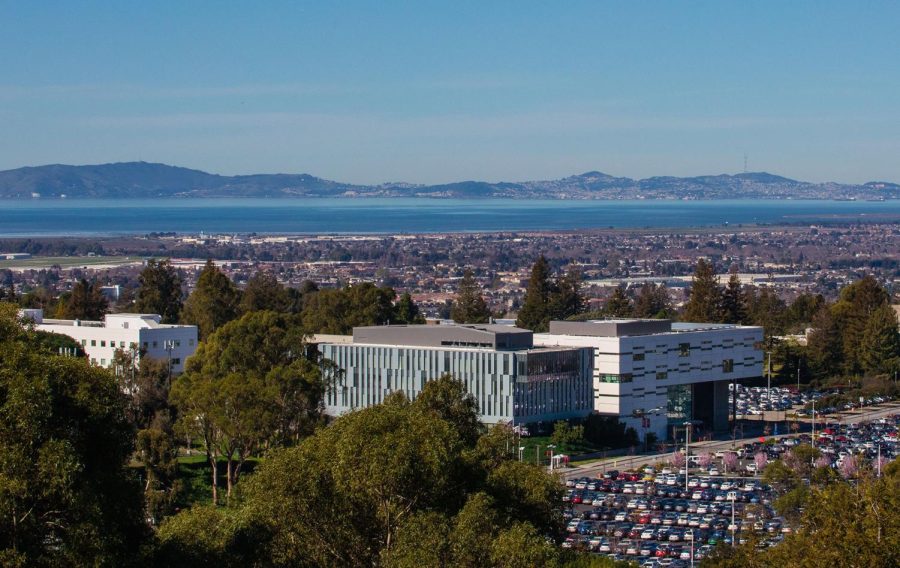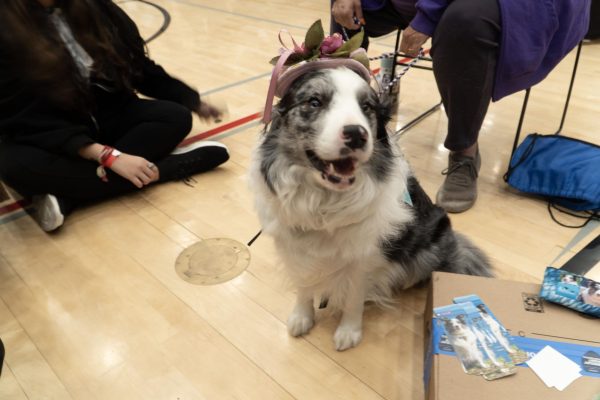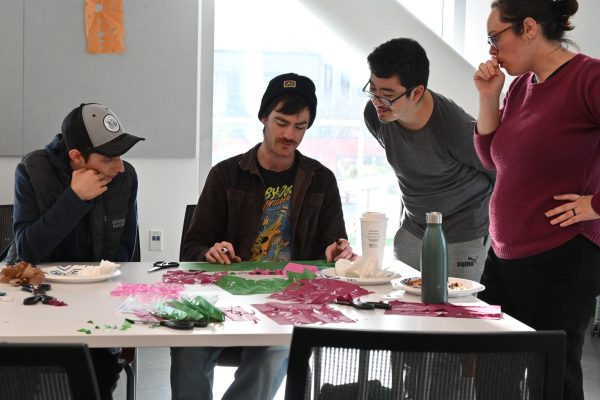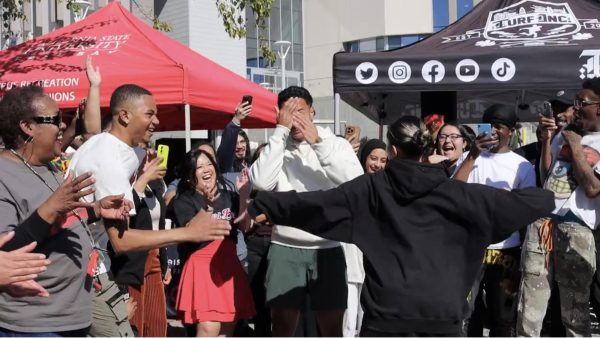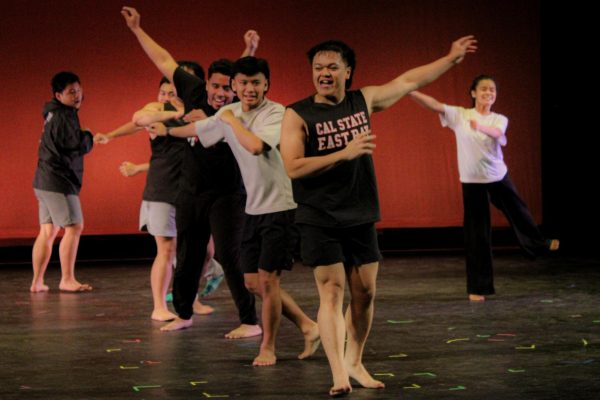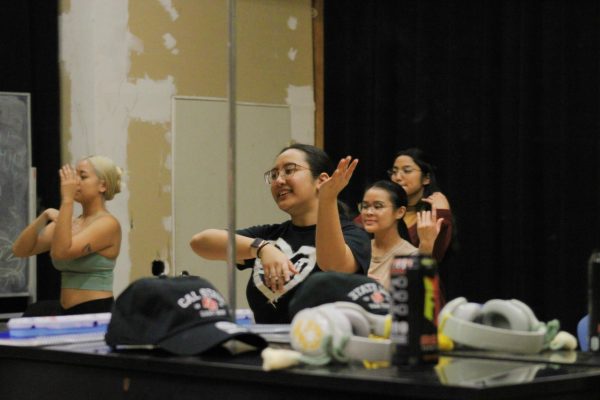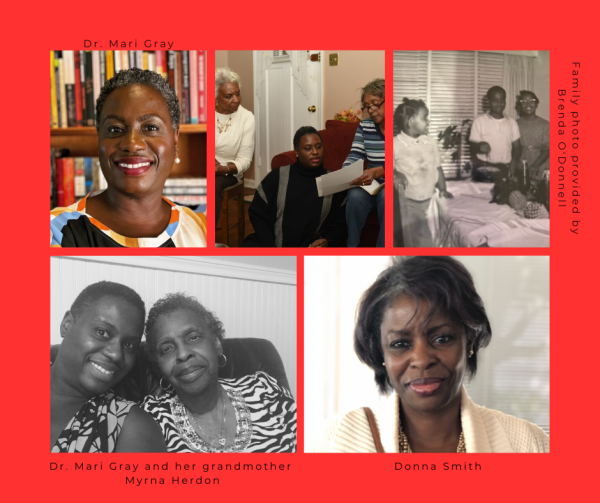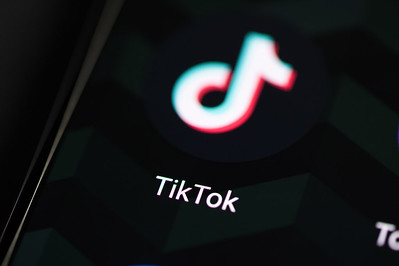Call for Universal Design for Living, Learning, and Working at CSUEB: An open letter to our campus community
Our campus community has demonstrated remarkable resilience, commitment, and caring throughout the pandemic. We appreciate the extraordinary efforts of our colleagues and students.
As we enter this next phase of the COVID-19 pandemic, the way forward is perhaps less clear than it has been over the past two years. Some feel it is time for a return to “normal”, while others assert that it is not yet safe to do so. We all want what is best for the university and all of its community members. At times, members of our campus community have had very different ideas about what these “best next steps” might be. All of us have had to adapt to radically new ways of teaching, learning, communicating, problem-solving, managing our personal lives, and working within our family and community structures. We have all been pushed to our growing edges.
Though we have all been impacted by the pandemic, our experiences are highly varied. Too many have lost loved ones. Many of us are exhausted, including essential workers, parents of children under age 18, and caregivers. Others have lost work or made tough decisions to leave work that was harmful. Some have been too isolated, while others have lacked solitude. People from marginalized communities, including people with disabilities, individuals living in poverty, Black, Asian, Latinx, and Indigenous people, and many others have been exposed to more risk and disruption, not only from COVID-19, but from bias, microaggressions, and discrimination. Additionally, staff, lecturers, and junior faculty have less job security, and so may be hesitant to advocate for the working and learning experiences they need.
The future is uncertain. While vaccines were developed quickly and are incredibly effective at reducing the severity of a COVID-19 infection, they have not been the panacea we had initially hoped they would be. Vaccination rates are lower in some communities than others due to personal concerns, structural barriers, and misinformation. Many people around the world haven’t had their first shot. Children under five are still ineligible for vaccination. People who have been vaccinated can still transmit the virus to others and fall ill.
Many of us thought the pandemic was nearing an end until the omicron variant appeared and moved the finish line. Cases in the SF Bay Area are dropping, but still high. Given the ongoing uncertainty and wide variation in risk and protective factors, we need a pandemic response that makes space for all to live, learn, work, and thrive. It’s time to implement an approach that centers Universal Design for Living, Learning, and Working. This approach, based in Universal Design for Learning, applies flexible, creative, inclusive thinking to maximize participation for all. This benefits our entire campus community, not just people with disabilities. As disabled people, accomplices, and people who have been impacted by this pandemic, we pledge and encourage others to support the following to help keep our campus community safe, inclusive, and accessible:
-
- Communicate clearly and consistently about the need to keep our shared spaces safer, by instructing members of our campus community with any symptoms of illness to avoid coming to campus, enforcing quarantine and isolation guidelines established by the California Department of Public Health, and continuing masking until case numbers reach a low level. For example, in several recent chairs’ meetings, responses to questions about what to do when a student presents with symptoms (e.g. coughing, sneezing) in class have been vague. We believe that for the time being, anyone experiencing symptoms, regardless of vaccination status or test results, should avoid coming to campus and use remote options if they are well enough to work or attend class. We would also like to see more robust systems in place for notifications of exposure so that people can appropriately assess their risk.
- Continue flexible options for teaching and learning for faculty and students, including robust in person, online, synchronous, co-synchronous, and asynchronous activities. Spring schedules were made months ago, at a time when we hoped that the pandemic would be more controlled. Though the semester began virtually, classes are now expected to be taught in the modality they were originally scheduled for. This puts faculty and students in uncomfortable situations, trying to be accommodating yet being instructed to offer courses in the originally scheduled modality. This also adds additional barriers for faculty and students who are immunocompromised, have chronic health conditions, and/or live with people who are at greater risk. Some simple ways to increase flexibility include:
- Developing flexible attendance/participation policies that allow students multiple ways of participating, including by watching recorded video sessions of class meetings, completing asynchronous course-related activities, and/or meeting with fellow students or the instructor.
- Recording class sessions and posting recordings, except when personal information is shared
- Teaching co-synchronously as much as possible and allowing students to choose whether to attend in person or via zoom from one week to the next
- Providing robust hybrid options, whether synchronous or asynchronous, or online options for courses for maximum instructional flexibility
- Continue flexible options for working remotely or in person. Though some jobs must be done in person, many do not. Discussion of how and where work can be performed should remain at the department level. Two days per week of telecommuting is insufficient for workers with pandemic-related concerns as well as staff with certain disabilities that make in person work more difficult. Employees value remote work options. We’d like our campus to be a leader in offering a flexible work environment that attracts and retains diverse and talented staff, and helps our university fulfill our commitment to sustainability. We need to think thoughtfully about when and how to gather in person given the impact of driving on our climate.
- Adopt a person in environment approach that matches workers and learners with opportunities that are safe for them and meet their working and learning needs given their individual circumstances. Workers and learners should not be required to present documentation of disability, lack of childcare, or any other evidence. We trust people to assess their situations and make appropriate decisions.
- Increase access to vaccinations, tests (PCR and rapid), high quality masks, air filters, and other supplies to make our in person spaces as safe as possible. For example, when one of our faculty walked by one of the mask distribution tables on campus last week, the table was empty. We have learned that at times, the line for testing can be quite long, suggesting a need to increase capacity. Departments have been informed that they can order KN95 masks, but with a limit of two boxes of 20 masks per department, this is insufficient for larger departments.
- Eliminate barriers to promote health and well-being for everyone in our campus community. We need to expand efforts to provide health and mental health services, accessibility services, basic needs supports, advising, tutoring, peer support, recreation, and more. These services must be adequately resourced and allow for in person and virtual support to the greatest extent possible.
In closing, we want to emphasize the need for flexible, collaborative, and creative approaches to teaching, learning, and working that are appropriate for each person and department. We believe that emphasizing the well-being of all will attract students, faculty, and staff to our campus and make us an exemplar of innovation and inclusion. Though we may be entering a less acute phase of the COVID-19 pandemic, future disruptions due to climate change and other pandemics are likely. We have the opportunity now to set a supportive and intentionally flexible precedent that will be desperately needed in the future.
Sincerely,
As of 3/15/2022, 77 members of our campus community, including faculty, staff, and students, have signed this letter, along with two disability justice organizations (The Disability Justice Working Group and Disability Justice Faculty Learning Community.)
(signatures in alphabetical order by first name and appear exactly as inputted)
To add your signature to this letter, click here: https://forms.gle/miYe7StQVkfyWGJ79
| Abinash Bhattachan | Department of Earth and Environmental Sciences |
| Adisa | CSUEB Student |
| Professor A. Fajilan | Theatre & Dance Faculty |
| Ardella Dailey, EdD | Department of Educational Leadership |
| Barbara Hall | Philosophy and Religious Studies |
| Beatriz Avendano, MSW Student | CSUEB Student |
| Becky Beal | Department of Kinesiology |
| Ben Tran | MSW |
| Catherine Bauzon | Department of Social Work |
| Christina Chin-Newman | Human Development and Women’s Studies |
| Christine Gottlieb | English |
| Christopher D. Karadjov, Ph.D. | CSULB Department of Journalism and Public Relations |
| Christopher Moreman | Dept. of Philosophy & Religious Studies |
| Christopher Palmore, PhD | Criminal Justice |
| Courtney A. Miller | CSUEB student |
| Dal-Hyun Moon | CSU East Bay, Kinesiology Department |
| Danielle Lowen | Human Development and Women’s Studies |
| Danielle Martinez | CSUEB Student |
| Diana Lopez, MSW Student | CSUEB Student |
| Diana K. Wakimoto | University Libraries |
| Disability Justice Faculty Learning Community | |
| Disability Justice Working Group | |
| Donilon Alcantara | Departments of History and Philosophy & Religious Studies |
| Eric Engdahl | Teacher Education |
| Eric Kupers | Theatre and Dance Department |
| Eve Higby | Speech Language & Hearing Sciences |
| Ewuradjowa Addo | CSUEB MSW Student |
| Ginalyn (Gin) Hansson, MSW Student | CSUEB Student |
| Gr Keer | University Libraries |
| Greg Jennings | Educational Psychology |
| Haiden Tomas Grushkin | CSUEB Theatre and Dance Student |
| Dr. Handwerker, PhD, MPH | |
| Jacob Lesner-Buxton | CSUEB alum |
| Jeff Newcomb | Dept. of Marketing, CBE |
| Jeffra D. Bussmann | Library Faculty |
| Joanne Lee, MSW student | CSUEB – MSW student |
| John Paul Horn, PhD, MSW | Department of Social Work |
| Jung You, PhD | Economics Department |
| K. Michael Rowley, PhD | Kinesiology Department |
| Kimberly A. Borden | EdD Doctoral Program |
| Kristen Gustavson, LCSW, PhD | Assistant Professor, Social Work |
| Dr. Kristin Vogel-Campbell | CSUEB Alum |
| Lainey Witt | CSUEB MSW Student |
| Lana Mariko Wood | University Libraries |
| Lexie | CSUEB Student, Dance Major |
| Lindsey Grubbs, PhD | |
| Lisa Booker | CSUEB Staff and Alumni |
| Maha Jacobs | Communication |
| Malage LeBlanc | MSW Student |
| Marcelliese Hardin | CSUEB student |
| Margaret Buchanan | CSUEB MSW student |
| Maria Livaudais, PhD | Public Health |
| Maria Tijerino-Lew | Csueb Student |
| Mariana T. Guzzardo, PhD | Human Development and Women’s Studies |
| Mary Cardaras | Chair, Department of Communication |
| Dr. Mary Soto | TED |
| Meaghan McCollow | EPSY Faculty |
| Michael Hall | Art |
| Michele A. Korb, Ph.D. | Teacher Education |
| Michelle Charron MSW, PPSC | Social Work Department |
| Negin Toosi | |
| Renu Whetstone | CSUEB student |
| Richard A. Sprott, PhD | Department of Human Development and Women’s Studies |
| Sahar Nouredini, PhD, RN, CNS | Nursing |
| Samara Heifetz | MSW Student |
| Sandy Zhu | MSW Student |
| Saori Okawa | MSW Student |
| Sara McDaniel | Department of Educational Psychology |
| Sarah Nielsen | English Department |
| Sarah Taylor, PhD, MSW | Department of Social Work |
| Shannon Coskran | PACE Program |
| Shubha Kashinath | Speech Language and Hearing Sciences |
| Scott Hopkins | Art |
| Siang Sin Goh, MSW, M.Ed. | Social Work |
| Susan Forsyth PhD, RN | CSUEB Nursing Faculty |
| Talya Kemper, PhD | Teacher Education Department Faculty |
| Teresa Yang | MSW student |
| Vida Pavesich | Philosophy department |
| Zachary Pietrantoni, PhD | Department of Educational Psychology |


